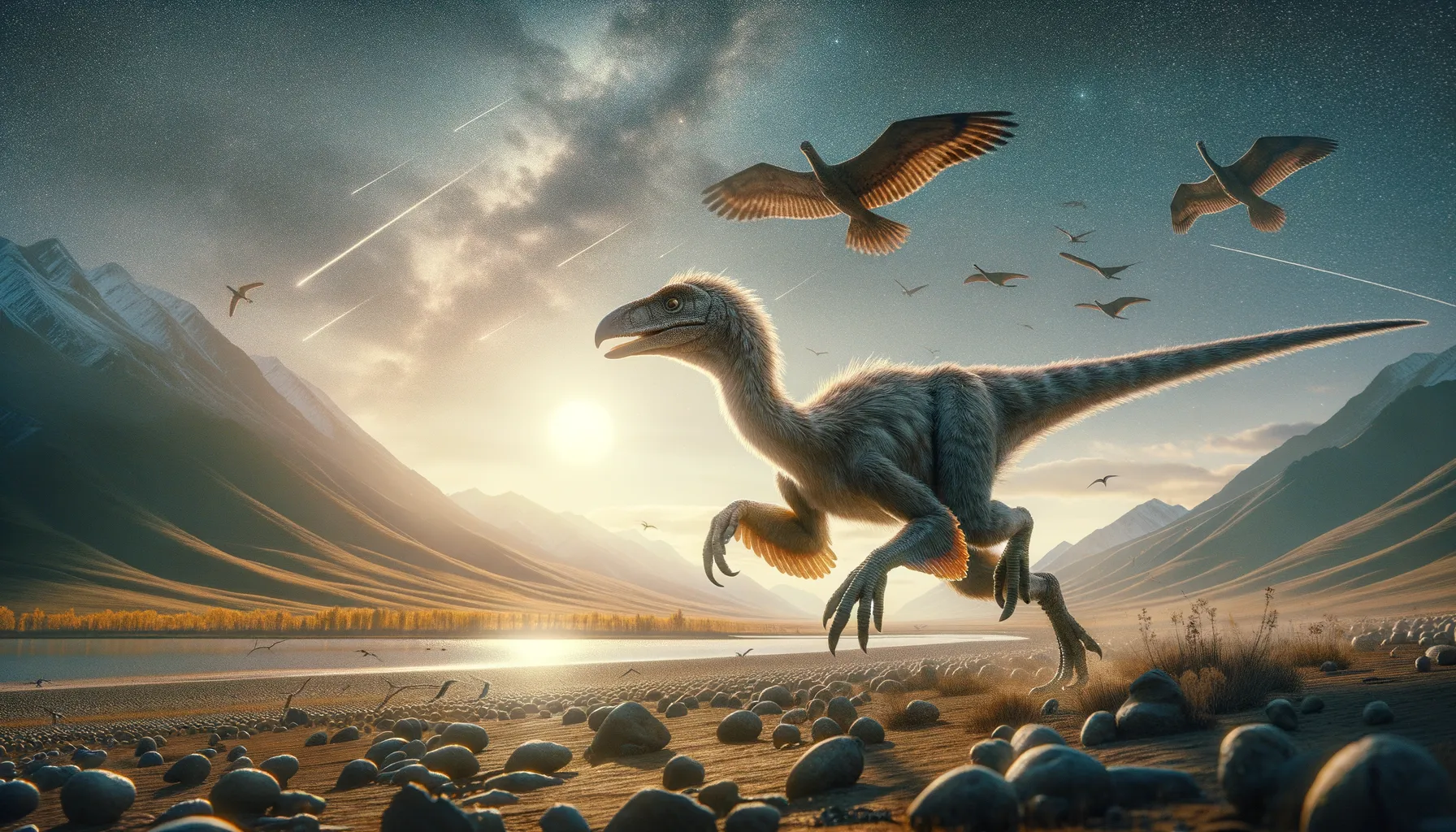
Albinykus
Tiny sprinter from the Cretaceous sands.
Period
Cretaceous
Length
Measured about 0.7 meters in length.
Height
Stood at approximately 0.5 meters tall.
Weight
Estimated to weigh around 1 kg (2.2 lbs).
Albinykus was a small, bird-like dinosaur that lived during the Late Cretaceous period. Discovered in Mongolia, this tiny theropod is notable for its close relationship to birds. Its lightweight body and long legs suggest it was adapted for running, possibly evading predators and catching small prey. As a part of the Alvarezsauridae family, it provides important insights into the evolution of bird-like characteristics among dinosaurs.
Diet
Albinykus was likely an insectivore, feeding on small insects and grubs. Its sharp claws were probably used for digging into termite nests or breaking open rotting logs to find its food.
Hunting
It is believed to have used its speed to catch agile, small prey in its environment. Albinykus might have also used its forelimbs to probe for food, given their structure suggests specialized adaptations.
Environmental challenges
Living in a desert environment, Albinykus faced challenges such as extreme temperatures and scarce water sources. Its small size could have helped it hide from larger predators. The need to find sufficient food could have driven it to develop specialized hunting tactics. Seasonal changes might have forced it to adapt its behavior to cope with varying availability of resources.
Speed
It was likely a fast runner due to its small size and lightweight build.
Lifespan
Possibly similar to modern birds, around 10-20 years.
First discovery
Discovered in 2007 in the deserts of Mongolia.
Fun Facts
- Albinykus was a small dinosaur that lived about 85 million years ago during the Late Cretaceous period.
- Despite its small size, Albinykus was a member of the theropod group, which includes large predators like Tyrannosaurus rex.
- Albinykus belonged to the Alvarezsauridae family, known for their specialized forelimbs that suggest they may have been skilled insect hunters.
- This dinosaur was discovered in Mongolia, known for its rich fossil beds that have revealed many unique dinosaur species.
- Albinykus was likely covered in feathers, which might have helped it maintain body temperature or assist in display and camouflage.
- Albinykus would have been roughly the size of a large chicken, making it one of the smaller known dinosaurs.
- The name 'Albinykus' means 'White Claw', inspired by its distinct small claws that might have been used for digging into insect nests.
Growth and Development
Albinykus likely grew quickly, as rapid growth is common in small dinosaurs to evade predation. Fossil evidence suggests young Albinykus would have been relatively self-sufficient shortly after hatching. Their development included gaining strength and coordination for rapid movement. Juveniles possibly had different dietary needs compared to adults, focusing more on easily caught prey.
Habitat
Albinykus lived in the arid deserts of what is now Mongolia. Its habitat was characterized by sand dunes and sparse vegetation. Water sources would have been limited, requiring it to adapt to the dry conditions. The region's ecology included a variety of other small dinosaur species and primitive birds.
Interaction with other species
Albinykus probably competed with other small theropods for food. It may have had to be cautious of larger predators in its environment. The bird-like dinosaurs it cohabited with could have shared similar environmental niches. Its interactions would have also included avoiding confrontations and utilizing its speed for survival.
Natural lifespan
The natural lifespan of Albinykus was likely between 10 and 20 years.
Reproduction
Albinykus likely laid eggs, as was typical for theropods. The nesting habits are not well-documented, but it could have shared traits with other small theropods, such as caring for its young. Given its size, it might have used natural features for nest protection. Parental care could have played a role in protecting vulnerable hatchlings.
Social behaviour
Albinykus might have been somewhat solitary or formed small groups for hunting. Given its small size, group behavior could have provided safety advantages. Social structures, if present, were likely simple and focused on mutual benefits. Communication might have been through visual or vocal signals to coordinate in its environment.
Fossil locations
The fossils of Albinykus have been primarily found in Mongolia. This discovery in the Gobi Desert is notable for contributing to our understanding of small theropods. The area is rich in Cretaceous fossils and has revealed much about dinosaur diversity. Albinykus remains offer key evidence in studying dinosaur-bird evolutionary links.
